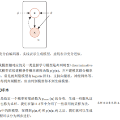Generative adversarial networks achieve great performance in photorealistic image synthesis in various domains, including human images. However, they usually employ latent vectors that encode the sampled outputs globally. This does not allow convenient control of semantically-relevant individual parts of the image, and is not able to draw samples that only differ in partial aspects, such as clothing style. We address these limitations and present a generative model for images of dressed humans offering control over pose, local body part appearance and garment style. This is the first method to solve various aspects of human image generation such as global appearance sampling, pose transfer, parts and garment transfer, and parts sampling jointly in a unified framework. As our model encodes part-based latent appearance vectors in a normalized pose-independent space and warps them to different poses, it preserves body and clothing appearance under varying posture. Experiments show that our flexible and general generative method outperforms task-specific baselines for pose-conditioned image generation, pose transfer and part sampling in terms of realism and output resolution.
翻译:生成对抗性网络在不同领域,包括人类图像中,在光现实图像合成方面取得巨大绩效,但通常使用潜伏矢量,将抽样产出编码为全球范围,无法方便地控制图像中与语义相关的个别部分,无法抽取仅具有部分差异的样本,如服装风格等。我们处理这些局限性,为穿衣人图像提供一个基因化模型,提供对面容的控制、地方身体部分外观和服装风格。这是解决人类图像生成各个方面,如全球外观取样、布置转移、部件和服装转移以及部分在统一框架内联合取样的第一种方法。作为我们模型,在一个正常的、依赖外观的空间中将基于基于方的潜伏矢量编码成基于方,并将它们扭曲为不同的外观,它保护了身部和外观。实验表明,我们灵活和一般的基因化方法超越了成型图像生成的具体任务基线,在现实主义和产出分辨率方面构成转让和部分取样。



